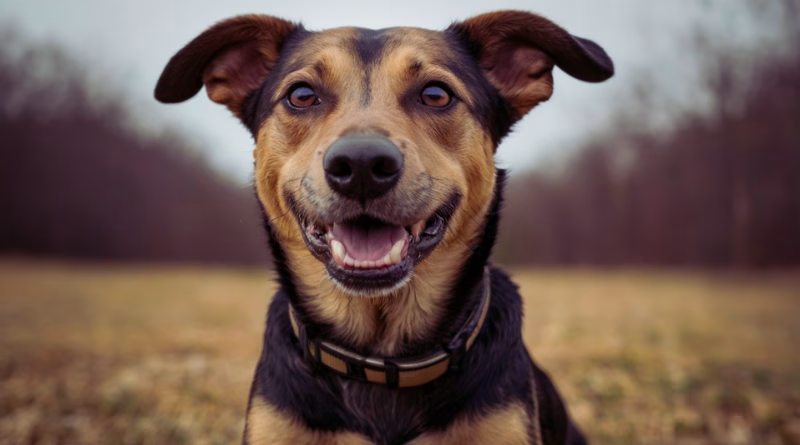Canine Parvovirus is one of the most dangerous and contagious illnesses affecting dogs today, especially young puppies and those who have not completed their vaccination schedules. This highly infectious virus can cause severe illness if not identified and treated promptly. In this post, we explore everything you need to know about Canine Parvovirus—including its symptoms, treatment options, and practical prevention strategies that every pet owner can apply.
What is Canine Parvovirus?
Canine Parvovirus is a viral infection that primarily attacks your dog’s stomach and intestines, leading to rapid and intense gastrointestinal problems. The virus spreads very easily from dog to dog, particularly in busy places such as dog parks, kennels, and animal shelters. It can survive on surfaces for a long time, which raises the risk of transmission even after a contaminated area seems clean.
Since the infection often occurs when an unvaccinated dog comes into contact with infected feces or surfaces, vaccination is the best defense. Trusted organizations like the American Veterinary Medical Association and the American Kennel Club recommend following a strict vaccination schedule to keep your pet safe.
Recognizing the Symptoms
Being able to spot the early signs of Canine Parvovirus can be life-saving for your pet. Here are some symptoms you might easily notice during your daily routine:
Stomach Troubles
- Severe Vomiting and Diarrhea: If your dog experiences repeated vomiting and diarrhea that sometimes even contains blood, it means the stomach and intestines are under severe stress.
- Loss of Appetite: A sudden disinterest in food and water is a red flag that your dog is unwell.
Other Observable Signs
- High Fever: An unusually high temperature accompanied by extreme tiredness or simply “feeling very unwell” indicates the body is fighting the infection.
- Lethargy: When your normally active dog becomes unusually sleepy or inactive, it’s a sign that its energy is being drained by the illness.
- Dehydration: Continuous vomiting and diarrhea can quickly lead to dehydration. Look for signs like dry gums or reduced energy levels.
Early detection is critical for successful treatment. Noticing even one of these signs should prompt you to contact your veterinarian right away.
Treatment Options
Once a veterinarian confirms the diagnosis through tests, the treatment focuses on supporting your pet’s body to fight off the virus. Although there is no direct cure for the infection, prompt and proper care can make all the difference.
Hospital Care and Home Comfort
- Fluids Through an IV Line: To replace lost fluids, your dog will likely receive fluids through a simple IV line—a small tube inserted into the vein. This procedure is essential to keep your pet stable.
- Medications: Although antiviral medicines do not exist for this virus, veterinarians commonly prescribe medicines to reduce nausea and pain. They may also use antibiotics to prevent any secondary infections.
- Gradual Feeding: Once your dog’s condition becomes stable, access to simple, easily digestible foods is reintroduced slowly. This step-by-step approach allows the stomach and intestines to adjust without further stress.
Veterinary experts stress that the earlier treatment begins, the higher the chance for a full recovery.
Prevention Strategies
Preventing Canine Parvovirus is far simpler than treating an outbreak. Here are some clear-cut, everyday steps you can take:
Consistent Vaccination and Cleanliness
- Vaccination Schedule: Ensure that your pet is vaccinated at the proper intervals. For puppies, the first shots begin around 6 to 8 weeks of age, with booster injections continuing until about 16 weeks. Regular boosters in adult dogs also help maintain protection.
- Regular Cleaning: Maintaining a clean living space is vital. Use a diluted bleach mixture to disinfect areas where your dog spends time—especially after park visits or encounters with other dogs.
- Safe Socialization: Be cautious when meeting new dogs. Limit contact with unfamiliar or unvaccinated dogs until you’re sure of the potential risks.
What To Do If Your Dog Shows Signs
Quick and decisive action is crucial if you suspect Canine Parvovirus:
- Contact Your Veterinarian Immediately: Do not delay if you observe severe vomiting, diarrhea, or extreme lethargy in your pet.
- Isolate Your Dog: Keep your dog separated from other animals to prevent spreading the virus.
- Keep Your Pet Comfortable: On the way to the vet, keep your dog warm, calm, and as comfortable as possible. Avoid any home remedies unless your veterinarian advises them.
Prompt action not only increases your pet’s chances of recovery but can also prevent the virus from spreading.
Conclusion
Canine Parvovirus is a serious threat, but through awareness, early treatment, and diligent prevention strategies, its impact can be greatly minimized. By keeping up with vaccination schedules, maintaining cleanliness, and watching for early signs, you give your pet the best defense. Remember, proactive steps today can protect your furry friend for the future.
Sources: PetsRadar, Vet Help Direct

